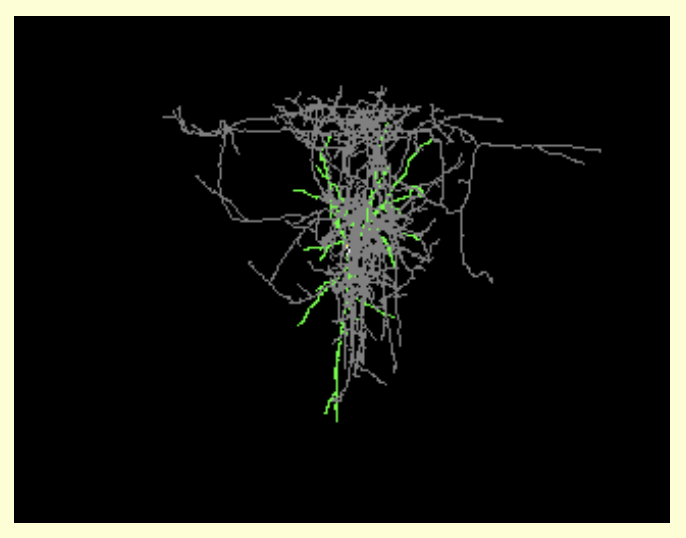URL: http://www.ncbi.nlm.nih.gov/ieb/research/acembly/
Proper Citation: AceView (RRID:SCR_002277)
Description: THIS RESOURCE IS NO LONGER IN SERVICE, documented May 10, 2017. A pilot effort that has developed a centralized, web-based biospecimen locator that presents biospecimens collected and stored at participating Arizona hospitals and biospecimen banks, which are available for acquisition and use by researchers. Researchers may use this site to browse, search and request biospecimens to use in qualified studies. The development of the ABL was guided by the Arizona Biospecimen Consortium (ABC), a consortium of hospitals and medical centers in the Phoenix area, and is now being piloted by this Consortium under the direction of ABRC. You may browse by type (cells, fluid, molecular, tissue) or disease. Common data elements decided by the ABC Standards Committee, based on data elements on the National Cancer Institute''s (NCI''s) Common Biorepository Model (CBM), are displayed. These describe the minimum set of data elements that the NCI determined were most important for a researcher to see about a biospecimen. The ABL currently does not display information on whether or not clinical data is available to accompany the biospecimens. However, a requester has the ability to solicit clinical data in the request. Once a request is approved, the biospecimen provider will contact the requester to discuss the request (and the requester''s questions) before finalizing the invoice and shipment. The ABL is available to the public to browse. In order to request biospecimens from the ABL, the researcher will be required to submit the requested required information. Upon submission of the information, shipment of the requested biospecimen(s) will be dependent on the scientific and institutional review approval. Account required. Registration is open to everyone., documented August 29, 2016. AceView offers an integrated view of the human, nematode and Arabidopsis genes reconstructed by co-alignment of all publicly available mRNAs and ESTs on the genome sequence. Our goals are to offer a reliable up-to-date resource on the genes and their functions and to stimulate further validating experiments at the bench. AceView provides a curated, comprehensive and non-redundant sequence representation of all public mRNA sequences (mRNAs from GenBank or RefSeq, and single pass cDNA sequences from dbEST and Trace). These experimental cDNA sequences are first co-aligned on the genome then clustered into a minimal number of alternative transcript variants and grouped into genes. Using exhaustively and with high quality standards the available cDNA sequences evidences the beauty and complexity of mammals' transcriptome, and the relative simplicity of the nematode and plant transcriptomes. Genes are classified according to their inferred coding potential; many presumably non-coding genes are discovered. Genes are named by Entrez Gene names when available, else by AceView gene names, stable from release to release. Alternative features (promoters, introns and exons, polyadenylation signals) and coding potential, including motifs, domains, and homologies are annotated in depth; tissues where expression has been observed are listed in order of representation; diseases, phenotypes, pathways, functions, localization or interactions are annotated by mining selected sources, in particular PubMed, GAD and Entrez Gene, and also by performing manual annotation, especially in the worm. In this way, both the anatomy and physiology of the experimentally cDNA supported human, mouse and nematode genes are thoroughly annotated. Our goals are to offer an up-to-date resource on the genes, in the hope to stimulate further experiments at the bench, or to help medical research. AceView can be queried by meaningful words or groups of words as well as by most standard identifiers, such as gene names, Entrez Gene ID, UniGene ID, GenBank accessions.
Abbreviations: AceView/WormGenes
Synonyms: AceView genes, AceView/WormGenes, The AceView Genes
Resource Type: database, data or information resource
Keywords: est, exon, expression, function, gene, alignment, arabidopsis, cdna, co-alignment, coding, disease, genome, genomic, human, intron, localization, mammal, mouse, mrna, nematode, pathway, phenotype, plant, polyadenylation, promoter, rat, sequence, signal, tissue, transcript, transcriptome, worm, blast, gold standard
Expand Allhas parent organization |
We found {{ ctrl2.mentions.total_count }} mentions in open access literature.
We have not found any literature mentions for this resource.
We are searching literature mentions for this resource.
Most recent articles:
{{ mention._source.dc.creators[0].familyName }} {{ mention._source.dc.creators[0].initials }}, et al. ({{ mention._source.dc.publicationYear }}) {{ mention._source.dc.title }} {{ mention._source.dc.publishers[0].name }}, {{ mention._source.dc.publishers[0].volume }}({{ mention._source.dc.publishers[0].issue }}), {{ mention._source.dc.publishers[0].pagination }}. (PMID:{{ mention._id.replace('PMID:', '') }})
A list of researchers who have used the resource and an author search tool
Find mentions based on location

{{ ctrl2.mentions.errors.location }}
A list of researchers who have used the resource and an author search tool. This is available for resources that have literature mentions.
No rating or validation information has been found for AceView.
No alerts have been found for AceView.
Source: SciCrunch Registry





